RustyRelics
Gold Member
- Joined
- Apr 5, 2019
- Messages
- 5,932
- Reaction score
- 32,705
- Golden Thread
- 0
- Location
- Central PA
- Detector(s) used
- Equinox 600/Ancient Whites MXT
- Primary Interest:
- Relic Hunting
- #1
Thread Owner
I don't even really know how or why I started collecting them. I think it might have something to do with the cool factor, and they just look neat. I in no way, shape, or form support nazis, hitler or the like, and only admire these helmets for their historical value.
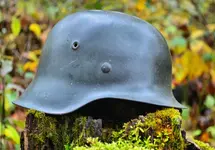
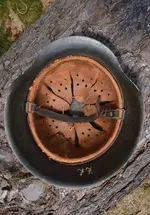
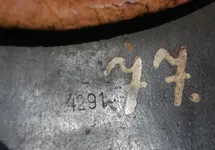
This was the first helmet I ever purchased.It's a No Decal M42 made by cKL, and belonged to a member of the 77th Infantry Division. It was covered in paint applied after the war, so I got it for really cheap, and removed the paint. It still has its original liner and chinstrap.
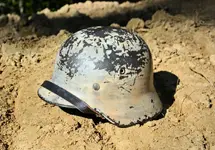
My second helmet was just a steel shell, ruined by the Czechoslovakians. I applied a Luftwaffe decal on it, and painted it a winter camo, and aged it so it would look good on my shelf.
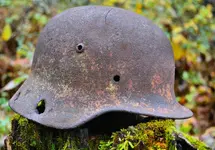
This helmet has been hit twice by bullets, and once by shrapnel. Whoever was wearing this was killed. It's in relic condition, and it was found in Italy. It still has traces of a very rare sand camo, common in the Italian/North Afrika theaters.
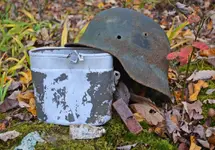
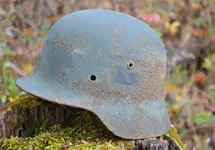
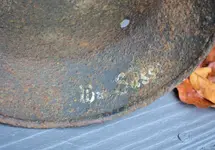
This helmet, along with a bullet struck mess tin, tube of toothpaste and pill container, were all found in one foxhole, at the Southern end of Konigsberg Prussia (now Kaliningrad Russia). The soldier painted his name on the inside of the helmet, Wilhelm Sasse. Sasse was born in 1907, and had two brothers and three sisters. He joined the army (I believe) in 1944, but records do not necessarily indicate that, or if he had prior service with another outfit. He joined 5th Kompanie, 613th Grenadier Regiment, 203rd Infantry Division. He fought in several battles, and the whole Konigsberg campaign, but on March 1st, 1945, his position was over run by Russians and he was captured. He was executed March 6th 1945. He was 38 years old.



This was the first helmet I ever purchased.It's a No Decal M42 made by cKL, and belonged to a member of the 77th Infantry Division. It was covered in paint applied after the war, so I got it for really cheap, and removed the paint. It still has its original liner and chinstrap.

My second helmet was just a steel shell, ruined by the Czechoslovakians. I applied a Luftwaffe decal on it, and painted it a winter camo, and aged it so it would look good on my shelf.

This helmet has been hit twice by bullets, and once by shrapnel. Whoever was wearing this was killed. It's in relic condition, and it was found in Italy. It still has traces of a very rare sand camo, common in the Italian/North Afrika theaters.



This helmet, along with a bullet struck mess tin, tube of toothpaste and pill container, were all found in one foxhole, at the Southern end of Konigsberg Prussia (now Kaliningrad Russia). The soldier painted his name on the inside of the helmet, Wilhelm Sasse. Sasse was born in 1907, and had two brothers and three sisters. He joined the army (I believe) in 1944, but records do not necessarily indicate that, or if he had prior service with another outfit. He joined 5th Kompanie, 613th Grenadier Regiment, 203rd Infantry Division. He fought in several battles, and the whole Konigsberg campaign, but on March 1st, 1945, his position was over run by Russians and he was captured. He was executed March 6th 1945. He was 38 years old.






